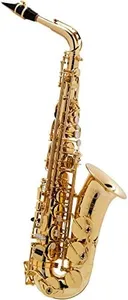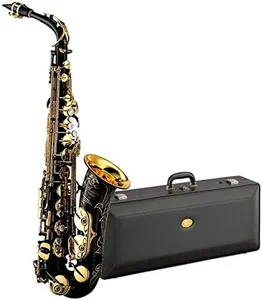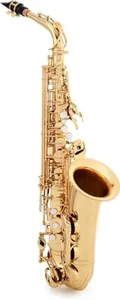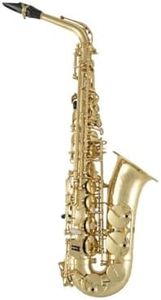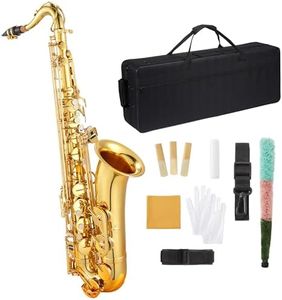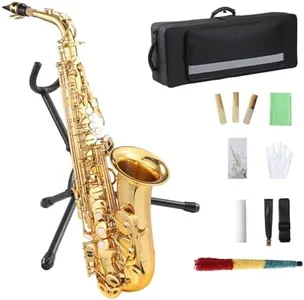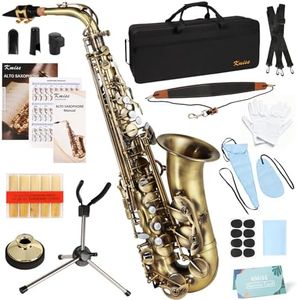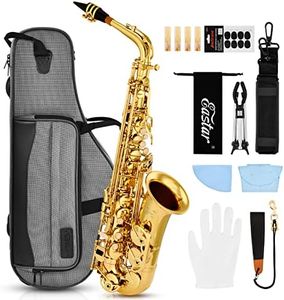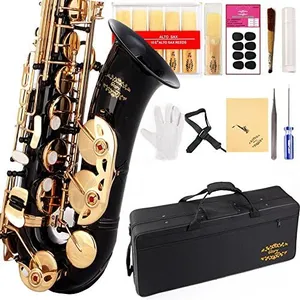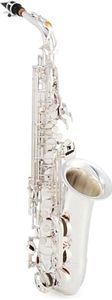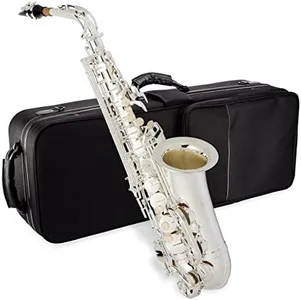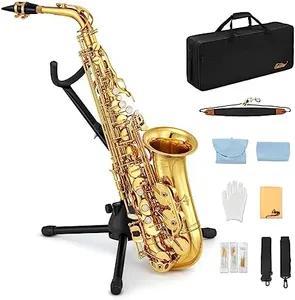Top 10 Alto Saxophones Deals Right Now
Selmer Paris SeleS AXOS Series Alto Saxophone Lacquer
Our technology thoroughly searches through the online shopping world, reviewing hundreds of sites. We then process and analyze this information, updating in real-time to bring you the latest top-rated products. This way, you always get the best and most current options available.

Our Top Picks
Selmer Paris SeleS AXOS Series Alto Saxophone Lacquer
The Selmer Paris SeleS AXOS Series Alto Saxophone Lacquer is a well-crafted instrument aimed at musicians looking for a reliable and comfortable playing experience. One of its standout features is the specially adapted keywork, which caters to players of varying skill levels. This makes it a suitable choice for both beginners and more advanced players seeking an affordable saxophone without compromising on quality. The instrument features leather pads and metal resonators, enhancing its tonal quality, while the Henri SELMER Paris S80 C* mouthpiece provides a solid foundation for sound production.
In terms of design, the AXOS comes with a colorless lacquer finish that not only looks elegant but also protects the metal from wear and tear. The engraving adds a touch of sophistication, which can be appealing to musicians who appreciate aesthetics. Additionally, the included SeleS case provides good protection for the instrument during transport.
The weight of the saxophone at 15.12 pounds might be a bit heavy for some players, especially for those who prefer lighter instruments for ease of handling. Some users may also find that the price point, while aimed at being more accessible, might still be on the higher side compared to other options in the market.
The Selmer Paris SeleS AXOS Series Alto Saxophone is an excellent choice for musicians seeking a balance of quality and comfort. Its strengths lie in its sound quality, design, and playability, making it ideal for both beginner and intermediate players. Potential buyers should consider the weight and pricing to ensure it fits their personal needs and budget.
Great Choice
Yamaha YAS82ZII Custom Z Professional Alto Saxophone (Black Lacquered)
The Yamaha YAS82ZII Custom Z Professional Alto Saxophone is a solid option for those serious about their music, especially professional musicians. One of its standout features is its construction quality, made from durable metal, which contributes to a rich, warm sound that many players appreciate. The black lacquered finish not only adds to its aesthetic appeal but also provides some protection against wear and tear. Weighing in at 17.2 pounds, it's relatively manageable for extended play, though some may find it slightly heavy compared to other models.
In terms of playability, the key mechanism is designed for smooth operation, allowing for easy transitions between notes. This can be especially beneficial for those who perform frequently or are in practice. The neck design of this saxophone is crafted to enhance tonal quality, making it a favorite among professionals who prioritize sound quality. Additionally, the mouthpiece and reed compatibility are designed to complement the instrument's capabilities, allowing for personalized sound preferences.
This saxophone comes with a few drawbacks. Its price point may be higher than what beginner players are willing to invest, making it more suitable for intermediate to advanced musicians. Also, while the vintage style is attractive, it may not appeal to everyone’s taste. The item’s weight could be a factor for younger players or those who prefer a lighter instrument for ease of handling.
The Yamaha YAS82ZII is best suited for professional players or serious students looking for a high-quality instrument that offers excellent sound and performance. While it has a few limitations regarding weight and cost, its strengths in sound quality and construction make it a worthwhile consideration for anyone dedicated to mastering the alto saxophone.
Yamaha YAS-62III Professional Alto Saxophone - Gold Lacquer
Most important from
49 reviews
The Yamaha YAS-62 Professional Alto Saxophone is designed for serious musicians looking for quality and performance. One of its standout features is the professional neck receiver, which enhances the instrument's tone and playability. The integrated key posts add to its durability, ensuring that it can withstand the rigors of regular use. The gold lacquer finish not only gives it an attractive appearance but also contributes to a warm sound that many players appreciate.
Weighing in at 14 pounds, this saxophone is relatively heavy, which might be a consideration for younger or less experienced players who may struggle with its weight during long practice sessions or performances. The 62-style neck is well-regarded for its design, providing a comfortable grip and a smooth playing experience. However, some players might prefer different neck options based on their personal comfort and playing style.
The mouthpiece and reed are crucial for sound production, and while Yamaha typically offers good quality here, they may not suit everyone's preferences. Musicians often find themselves experimenting with different mouthpieces and reeds to achieve their desired sound, so it's worth noting that customization is common in this area. This saxophone is well-suited for intermediate to professional players, making it a great choice for those seeking to elevate their playing. Beginners might want to look for a more affordable and lighter option while they develop their skills. The Yamaha YAS-62 excels in build quality and sound but may pose challenges for less experienced musicians due to its weight and price.
